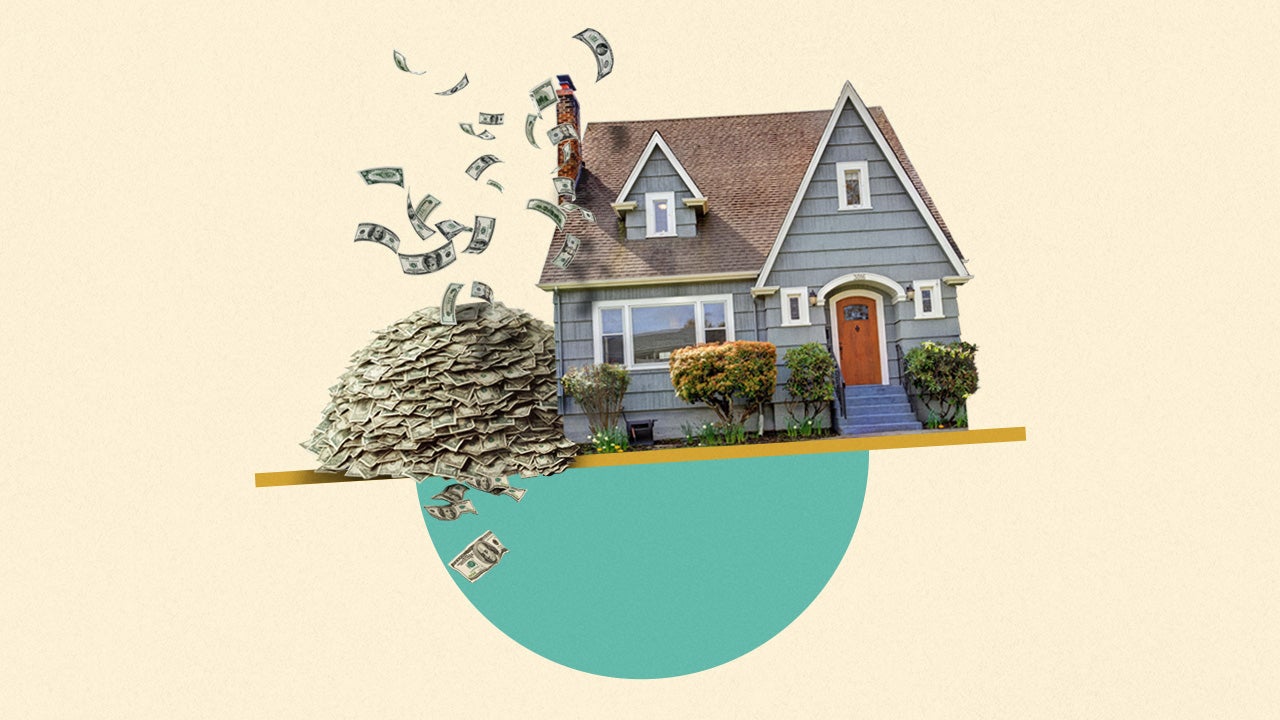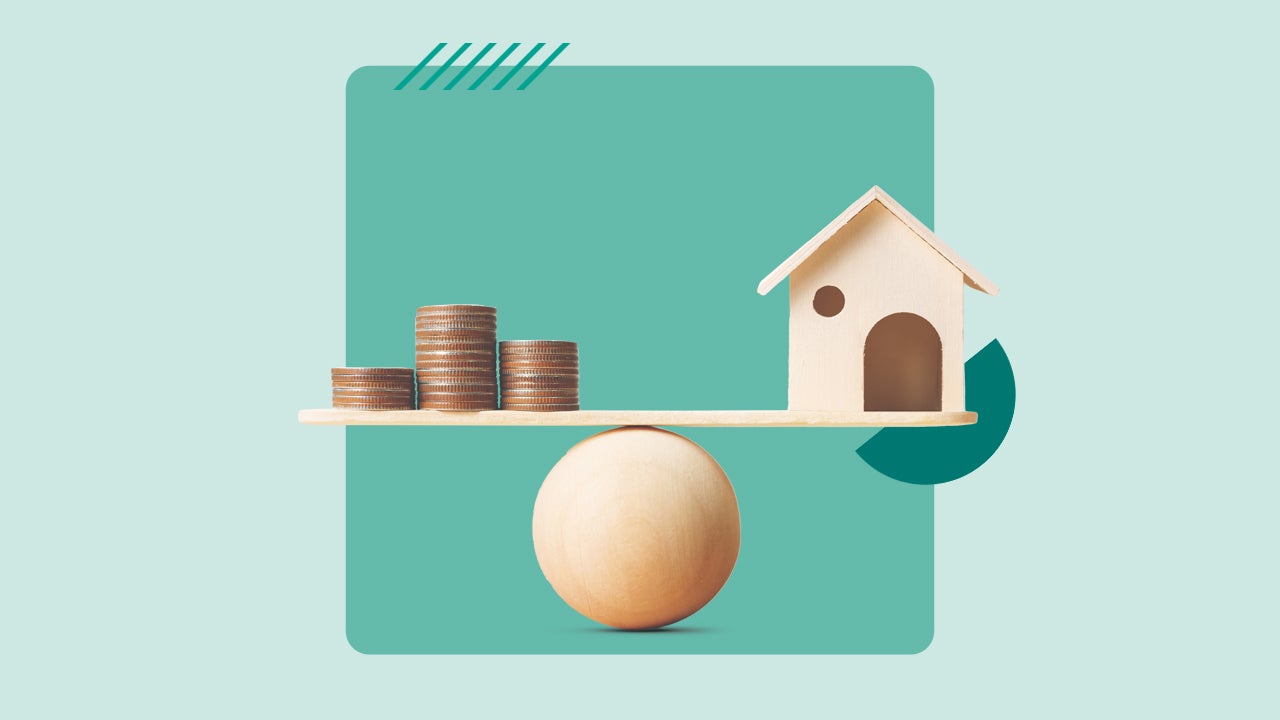Refinance appraisal: How it works and what to expect

Key takeaways
- An appraisal for a refinance is part of the underwriting process for a new mortgage.
- Appraisers look at various factors, including your home's location and its size, layout and improvements.
- Many lenders will not approve a refinance without an appraisal.
When you’re refinancing your mortgage, your lender may want to have a professional appraise your home to determine its market value. The result of the appraisal can have an impact on your new loan, such as determining whether you need to pay for private mortgage insurance (PMI).
Here’s how to prepare for a mortgage refinance appraisal.
What is a refinance appraisal?
A refinance appraisal is often part of the underwriting process for getting a new mortgage to replace your current one. Your lender can order an appraisal to determine your home’s market value and ensure it is worth enough to secure your new loan. It helps the lender determine your borrowing limit and loan size.
As with the original appraisal you ordered when buying the home, a refinance appraisal assesses your property’s condition and compares the residence to similar homes in your local real estate market. It may be a more streamlined process, though, compared to the first go-round — especially if you’re using the same lender.
Why do lenders require home appraisals for a refinance?
Lenders obligate you to get a home appraisal before a mortgage refi for several reasons, among them:
- The appraisal allows the lender to confirm your home’s current value. This information is important because a lender does not want to loan more than your home is worth, as the home serves as collateral for the loan. If for some reason you’re unable to repay the loan, the lender can opt to foreclose on the home and sell it to recover its funds. Thus, knowing your home’s value helps the lender know how much of a loan to offer.
- If you’re seeking a cash-out refinance, in which you are getting an additional lump sum, an appraisal is key in identifying how much equity you have in your home. Your equity is determined by your home’s current value, minus any outstanding mortgage balance. The cash-out amount you can get is based on the size of your equity stake.
- The appraisal gives the lender a sense of how you’ve maintained the property, and how it compares to other similar homes in your area.
Bankrate’s take: An appraisal can help you, the homeowner, too. By providing a current valuation of your home, an appraisal can come in handy if you contemplate selling your property. If your home’s worth has appreciated since you bought it, you might pleasantly discover an increase in the worth of your home equity stake – which might allow you a source for borrowing funds, or enable you to ditch private mortgage insurance premiums, if you pay them.
Do I always need an appraisal to refinance?
Not all refinances involve an appraisal. The decision, however, is entirely up to the lender.
Bank of America, for example, requires a refinance appraisal “to accurately assess the value of the property and the risk of the transaction,” says Ann Thompson, retired specialty lending executive for Bank of America. She further says that appraisals “provide independent validation of other critical information such as occupancy, completion, condo project information, and health and safety.”
The Federal Housing Administration (FHA) and the Department of Veterans Affairs (VA), however, offer speedy refinance programs that don’t require eligible borrowers to get property appraisals.
FHA streamline refinances offer what’s known as a “tangible benefit” in the form of a lower interest rate, a change of loan terms or a switch from an adjustable-rate mortgage (ARM) to a fixed-rate mortgage. When using an FHA streamline refinance, you’re unable to withdraw more than $500 (as cash-out), your mortgage must be in good standing and it must be an FHA loan.
The VA-backed streamline refinance, known as an Interest Rate Reduction Refinance Loan (IRRRL),(IRRRL), typically offers a lower interest rate and reduced monthly payments; it’s also possible to switch from an ARM to a fixed-rate mortgage. You can only refinance with an IRRRL if your original mortgage is a VA loan, and if your new interest rate is lower.
What factors do refinance appraisers consider?
When reviewing a home, whether it’s for a refinance or a new purchase, appraisers will focus on a few factors:
- Location. This is one of the most important factors. An appraiser will evaluate things like the recent sale prices for nearby homes with similar sizes and amenities. They will also look at how close your home is to desirable community attractions like parks and stores.
- Size. The available square footage of your home will also play a big part in your appraisal. The number of bedrooms and bathrooms will also have an impact.
- Layout and functionality. Your appraiser may also consider whether your home’s layout is modern or obsolete. Better functionality could increase home value.
- Home improvements. You can also get a more favorable appraisal if you’ve renovated important rooms like the kitchen and bathrooms, or replaced the roof. Any updates that bring the home closer to today’s standards will help.
- Exterior amenities. An appraisal considers both internal and external conditions. An appraiser will also evaluate decks, porches and garages.
- Condition of home systems. Any issues with plumbing, heating/AC, electrical or other major home systems can affect the overall home appraisal.
If you’re refinancing with the same bank and appraiser as your initial mortgage, the appraiser may pay closer attention to things like home renovations and maintenance. A new coat of paint and other improvements can help you land a higher appraised value.
How is a refinance appraisal different from a purchase appraisal?
Both refinance and purchase appraisers employ similar methods to assess a home’s value. However, a purchase appraiser benefits from having access to the purchase contract and the sales price, which sets a specific benchmark for the appraisal. HomeLight, a software platform for real estate agents and lenders, reports that approximately 30 percent of appraisers align the purchase price with the asking price.
In contrast, refinance appraisers lack a recent sales price or contract as a benchmark. So their valuation process hinges on the home itself and comparable properties, making their approach somewhat speculative since they start without a contractual baseline, so to speak.
Another difference is that, when refinancing your home, you can be present at the appraisal and highlight any renovations or upgrades you’ve made since owning the property, which might increase its assessed value. You can also furnish the appraiser with the purchase price and original valuation of your home.
How the appraisal process works
With a refi, the appraisal will occur before the final approval of the loan. The lender orders the appraisal and chooses the state-licensed appraiser, who contacts you to schedule the appraisal visit.
During the visit, the appraiser will walk through your home and assess both the interior and exterior of the property. This comprehensive review checks your property’s structural integrity, documents the number of rooms, examines whether significant upgrades or renovations have occurred since the last real estate transaction, and identifies any safety concerns. The appraiser typically will photograph different areas of your home. You should be allowed to be present during the visit if you choose.
Commonly, the appraisal visit can span between 20 minutes to a few hours, based on the size and complexity of your property.
During the walk-through, the appraiser will conduct a careful assessment of your home’s exterior, evaluating the overall structure, construction quality, location, age, site, integrity of the foundation and roof, state of the siding and gutters, landscaping and lawn condition, and overall surrounding neighborhood. The appraiser will also scrutinize your interior, including the home’s layout, size and number of bedrooms, bathrooms and other rooms, structural integrity, square footage, appliances, utilities, and compliance with local codes.
Alternatives to in-person appraisals
One alternative to an in-person refinance appraisal is a desktop appraisal, which occurs remotely. Here, the appraiser will utilize online resources to evaluate your home, including property records, floor plans and comparable listings.
Another option is a hybrid appraisal, which combines elements of both an in-person and desktop appraisal.
Yet another method is a drive-by appraisal, where the appraiser evaluates only the property’s exterior. This type of appraisal is commonly associated with Federal Housing Administration (FHA) refinances and Department of Veterans Affairs refinances and was more common during the COVID-19 pandemic.
How to prepare for a mortgage refinance appraisal
To secure the highest possible refinance appraisal, it’s important to take steps to get your home ready to show off.
Most people — appraisers included — look favorably on a clean and well-maintained home. But before you start painting walls or mulching your yard, speak with your appraiser.
“A homeowner can ask the appraiser what would help them the most when they are at the property,” says Lisa Desmarais, vice president of Appraisal Issues at the Appraisal Foundation, a professional association of real estate appraisers. “Because every property is unique to its own market, only the appraiser who is coming to the property will be able to best advise how the homeowner can prepare for the appraiser’s visit.”
Here are a few steps you can take to prepare for your refinance appraisal:
- Clean up. Your appraiser will likely want to view your home’s interior and exterior, so make sure to clean up both the yard and the inside. Even something as simple as dusting and cleaning up clutter can make your home look more appealing.
- Add lighting. Before the appraiser arrives, open the window shades and turn on the lights to make your home seem bright and inviting.
- Adjust the temperature. Be sure to set the heating or cooling at a reasonable temperature to make sure the interior is comfortable.
How much does a refinance appraisal cost?
Appraisal fees are included in the closing costs a borrower pays. According to the “2023 Appraisal Survey” by the National Association of Realtors, the typical cost to conduct an appraisal is $500, with 86 percent of those surveyed reporting a cost of $400 or more.
Home improvement site Angi reports a slightly lower figure, putting the national average cost of a home appraisal in 2023 is $356, with the price typically ranging between $313 and $423. Of course, as with almost everything real estate-related, prices vary tremendously depending on location.
What you pay can also depend greatly on your home’s size, number of additional structures and uniqueness. You may have to pay for an appraisal upfront but
The cost of the appraisal falls on the borrower to pay. However, you do not need to pay this fee until you close on the loan: It will be among the closing costs you’ll incur when you finalize the refi. You may also be able to roll this expense into the loan.
What to do if your home appraisal is low
Getting a low property valuation could hurt your chances of a successful refinance. Even if you have a great credit score, if a lender thinks you don’t have a lot of equity in the property they may deny the refinance. A home with a low appraisal represents a higher risk for the lender because you could end up underwater on the new mortgage (owing more on the home than it’s worth).
If you get a low appraisal, there are a few things you can do:
- Thoroughly review the appraisal report to ensure all information related to your home is accurate. Check carefully for any errors. Maybe the appraiser didn’t realize you’ve upgraded your HVAC system, listed a functioning fireplace as non-functional, forgot to notice one of your bathrooms, or logged the wrong number of bedrooms or square footage.
- Challenge or appeal the appraisal report. Prepare to provide evidence supporting why your home should be valued higher, such as recent comparable sales of homes in your neighborhood.
- Request a second opinion, if your lender allows it. This involves paying for another appraisal from a different professional.
- Consider requesting a cash-out refinance instead of a full refinance or agreeing to pay for private mortgage insurance (PMI) on the new loan if necessary.
- Shop for a different refi lender and begin the appraisal process all over again.
FAQs about refinance appraisals
-
The purpose of an appraisal is solely to assess the market value of the home. A home inspection evaluates the property’s condition, including its safety and the functionality of its systems, such as plumbing, electricity and heating. An inspector carefully reviews the property to uncover any hidden issues, as well as more obvious ones, but does not offer any assessment of a home’s market value.
-
Many lenders require a mortgage appraisal; without one, your new loan won’t be approved. In addition, if your home’s current market value is higher than what the lender assumes and you end up with a loan that’s less than 80 percent of the home’s value, you’ll avoid private mortgage insurance (PMI). That’s because you would now have 20 percent equity in the home.In addition, refinancing when your home value increases can work in your favor. If the appraisal shows your home value has gone up, you may be eligible for a lower interest rate or permitted to take more cash out. Also, knowing your home’s possibly higher value can enable you to make a more informed decision about borrowing against your ownership stake and tapping into your home’s equity via a home equity loan or home equity line of credit (HELOC). Finally, if your home value has increased, it can increase your chances of getting approved for the refinance.
-
After the refinance appraisal, you move on to the underwriting process. This is when the lender reviews your application materials to confirm that everything has been completed and submitted properly. Based on this information, the lender will either approve or deny your application. If your application is incomplete or incorrect, you may be given conditional approval. Once you are approved, you can proceed to closing on the loan.
-
An appraisal website collects data about your home and interprets it using mathematical calculations via an algorithm. However, this is not always accepted by all lenders for refinancing, as a website won’t be as nuanced as a person who can factor in more details about your home and the neighborhood.
You may also like

How to refinance a rental property





